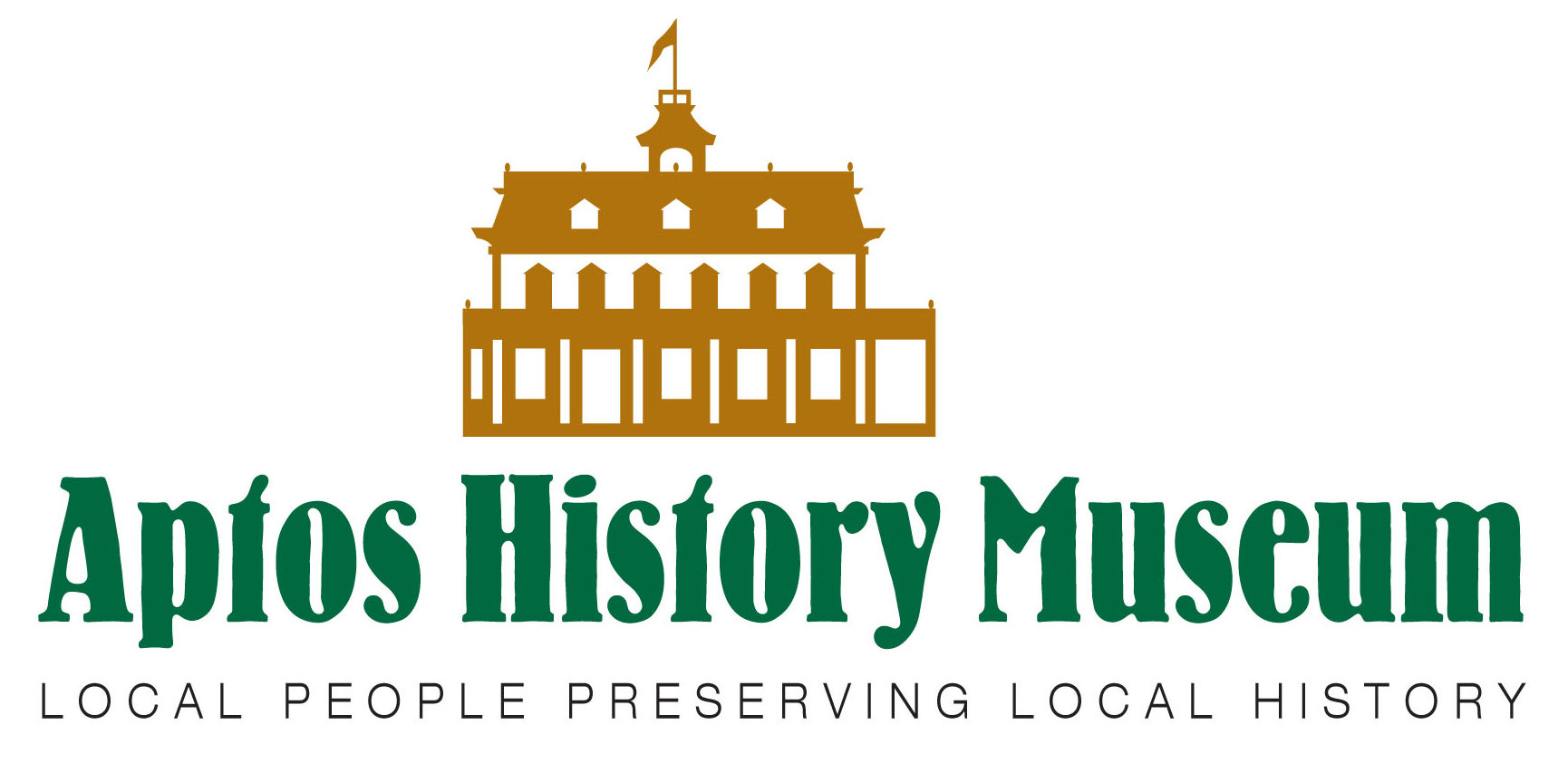By John Hibble
Transportation through Aptos has always been a challenge. Consider what it was like before there were bridges.
In the days of the missions, travel between Monterey and Santa Cruz might be by foot, horse or ox cart. Crossing any of the many creeks or gullies meant that you had to find a way from the high coastal plain down through the stream bed and up the other side. In the case of Aptos Creek that would mean traveling down today’s Aptos Rancho Road across from Safeway, crossing the creek, (which could be impassible in the winter), through Aptos Village Park, and winding your way up the hill to today’s Village or downstream to where Aptos Beach Drive is today. Either way, the drop and climb are over 100 feet vertically. If you came up on the village side, you also had to cross Valencia Creek.
The first bridge across the creek was a wooden structure built in 1860 on the flat where Aptos Village Park is today. The original Aptos town was on the western side of Aptos Creek where Aptos Village Square shopping center is today. Bridges into today’s Aptos Village area are what spurred development of the new town. Flooding in 1862 destroyed the bridge which was promptly replaced. In 1868, a smallpox epidemic was spreading from Monterey to Watsonville, so the benevolent folks of Santa Cruz burned the bridge in order to prevent the spread of the disease to the north, a ploy that was unsuccessful.
The next bridge was built in 1873 by the Pacific Bridge Company and was a 120-foot, clear span, Smith truss type. It was built of the best Oregon pine timber with fir planking, 16 feet wide. In the middle, it contained a sharp left turn into the new Aptos Village. It entered the Village where Parish Publick House now stands. With the onset of automobile, many cars crashed through the bridge railing and wound up in the creek below. Many people died as a result. It was considered the most dangerous spot on the Santa Cruz-Watsonville Road and was known as “Death Curve”
As the County Road, (Soquel Drive), entered the Village you had to jog left onto Trout Gulch Road, cross the railroad tracks, turn right onto Aptos Street and cross over a wooden covered bridge spanning Valencia Creek in order to continue east towards Watsonville. Today’s bridge under the railroad trestle had not been built.
The wooden bridge with the “Death Curve” was replaced with the existing reinforced concrete structure featuring a two-ribbed, one arch span, 253 feet long by 35.6 feet wide and is 136 feet high. It was designed by D. M. McPhetre, built by Thompson Brothers Contractors in 1928 and dedicated Saturday, May 18, 1929. Lloyd Bowman was the county surveyor and Granite Rock provided the sand and rock for the concrete. The bronze commemorative plates were made by Robert and Howard Cardiff at the Stanford University foundry.
The bridge originally had four General Electric Novalux lanterns as street lights, which were controlled by a revolutionary electric time clock. The bridge looks exactly like the famous Bixby Creek Bridge on the Big Sur highway which was completed three years later in 1932.
The Dedication ceremony was a major affair and was a four-page spread in the Santa Cruz Sentinel. The event included speeches, a parade, a carnival and an all-night dance at the new town hall with Paul Johnston’s 5-piece orchestra. More than 40 entries for the parade included floats, automobiles, marching units, and Aptos’ first fire engine. Miss Beatrice Davis was Miss Aptos. Her mother Emily was the operator of the telephone exchange. Miss Kathleen Clare was Miss Rio Del Mar. Miss Aptos cut the ribbon and smashed a bottle of Martinelli’s Champaign Cider on the railing, (it was still prohibition).
Also, in attendance were Miss Santa Cruz, Miss Watsonville and many dignitaries including Grand Marshal Edward Dollar. More than half of the town’s 250 residents turned out for this momentous occasion. The parade and spectators all turned left onto Spreckels Drive and went down to the beach for a picnic and swimming races in the creek.
The bridge dramatically improved transportation through the village. The next time you pass through Aptos Village think about the invisible bridges that make it all possible.
These stories are brought to you by the Aptos History Museum, a community service of the Aptos Chamber of Commerce. Many thanks to those of you who have made donations to help keep the Aptos History Museum afloat during the Covid19 epidemic. We need your help. We cannot do any regular fundraisers until we reach the 4th stage of reopening which will likely be early next year. We are considering offering our history presentations in a Zoom format as fundraisers and possibly an online auction. Please tell us what you would like to see. Any other ideas would be greatly appreciated. If you can make a donation of any size it will really help. Thank you. (831) 688-1467.




